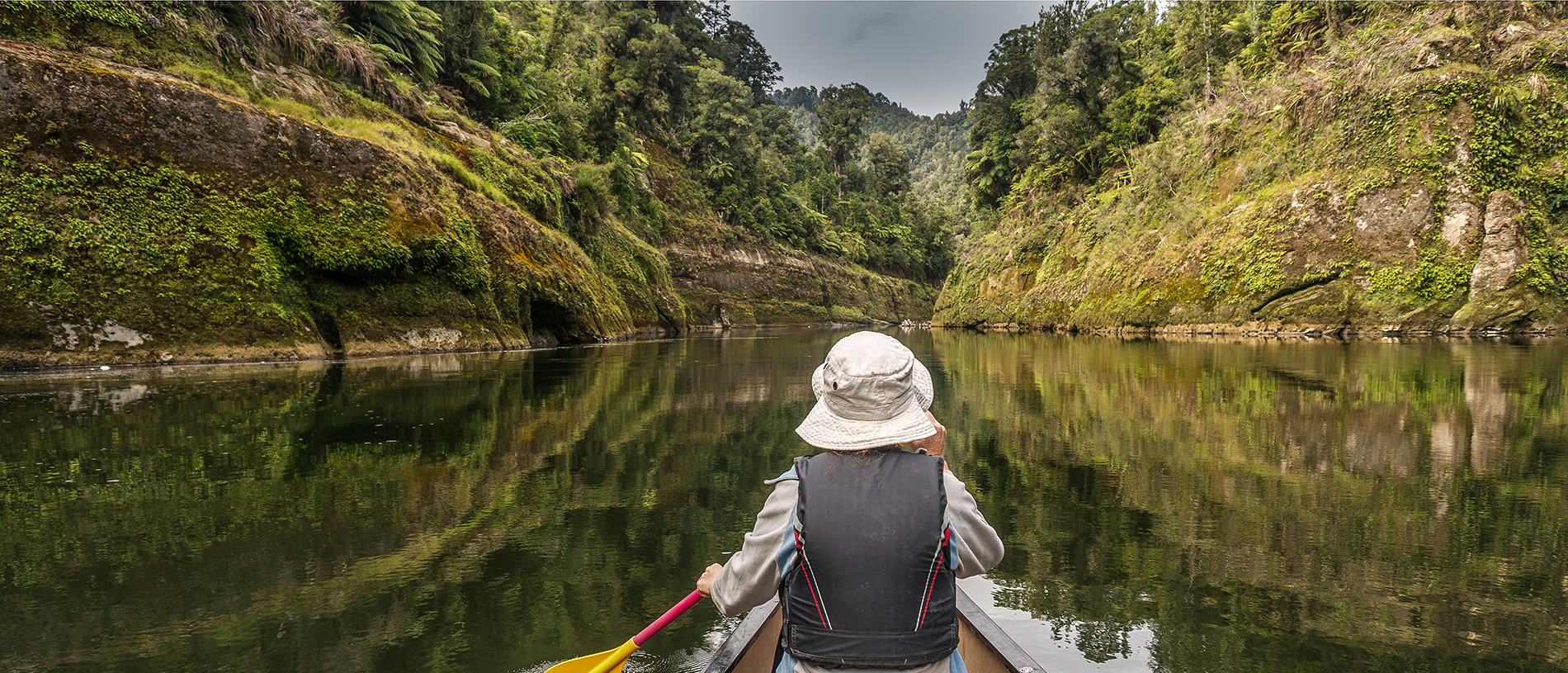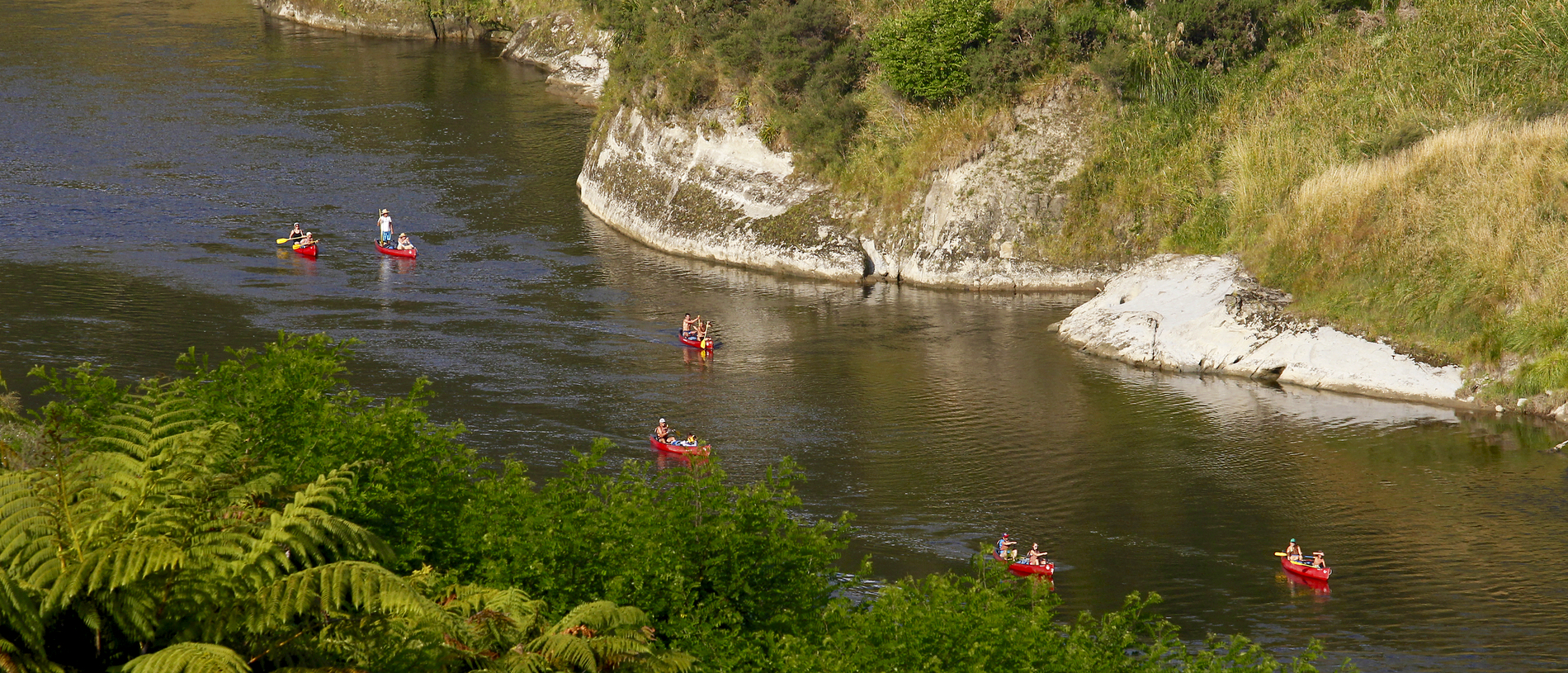
Whanganui National Park: the magic river
The Whanganui is New Zealand’s longest navigable river, winding its way from the mountains to the Tasman Sea. You can imagine it would have looked much the same a hundred years ago.

The Whanganui Journey is one of DOC's Great Walks, but it is less of a walk and more of a paddle.
The wild beauty of this area can be explored by kayaking or canoeing down the Whanganui River, through a landscape of remote hills and bush-clad valleys.

Whanganui means big bay or big harbour. Europeans called the area at the mouth of the river Petre, after an officer of the New Zealand company, but the name did not stick.
The land surrounding the river is only about a million years old. Formed of soft sandstone and mudstone papa from the ocean bed, it has been eroded by water to form sharp ridges, deep gorges, sheer cliffs and waterfalls.
Te Atihaunui people settled the valley from 1100 AD. In time the river became linked by a series of pā fortifications which were later called ‘the plaited fibres of Hinengākau’.
Māori cultivated the sheltered terraces and built elaborate weirs along river channels where eels and lamprey were known to converge. Every bend of the river had kaitiaki guardians that controlled the mauri life force of that place.
The first major European influence arrived with missionaries in the 1840s. In 1891 a regular riverboat service began carrying passengers, mail and freight to the European settlers on the river between Taumarunui and Pipiriki, and a thriving tourist trade soon began between Mount Ruapehu and the township of Whanganui, via the river.

In the 1930s, a government scheme tried to settle returned servicemen on farms in the Mangapūrua Valley. A large concrete bridge was built to provide road access to the lower and middle valley farms, but by the time it was completed these areas of the Mangapūrua Valley were deserted. The bridge was rarely used and the construction of the road to the Whanganui River was abandoned.
The so-called ‘Bridge to Nowhere’ is the largest and most intact structure relating to the former Mangapūrua Valley Soldiers Settlement and has an Historic Places Trust Category I listing. It can be reached via a gentle 40-minute walk from the Mangapūrua Landing on the Whanganui River, up the Mangapūrua Stream.
The main riverboat trade ceased in the 1920s due to improved roads, the development of the main trunk railway and the popularity of other tourist attractions around the country, although riverboats were still operating in the late 1950s.
Today, bird species such as kererū native pigeon, fantail, tūī, native robin, grey warbler and tomtit are often seen and heard along the riverbank. The call of the brown kiwi can often be heard at night. The river is rich in eels, lamprey, species of galaxiid (a group of native fish species including whitebait and kōkopu), kōura freshwater crayfish and black flounder.
The 145-km river journey from Taumarunui to Pipiriki takes an average five days to complete by canoe. An 87-km, three-day journey can also be made from Whakahoro to Pipiriki, and guided options are available. A highlight is a night at Tieke Kainga, the only DOC hut that is also used as a marae.